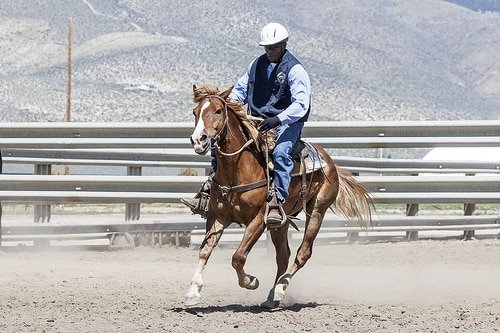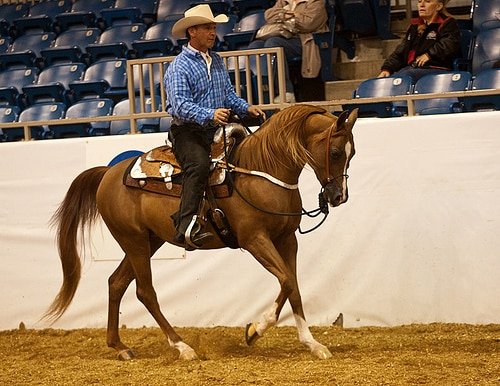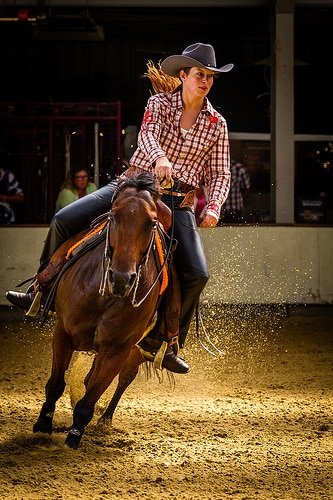
Transitions are a sticking point for many riders, especially the lope transition. Even if you get everything perfectly set up, asking for a lope transition can often lead to balking, rooting at the bit, throwing the head, and even bucking or rearing.
Why do so many horses have trouble with lope transitions?
Stage fright. For many horses it is simply a fear of being asked to perform a difficult maneuver on the spot. When you put them on the spot, they freeze up and panic. Remember, horses are prey animals. When they feel cornered, their first instinct is to avoid, then to flee, and their last instinct is to fight.
Avoidance causes balking and refusals to perform. Attempting to flee the situation causes rooting at the bit and throwing the head. Fighting back against the unwanted stimulus causes bucking or rearing.
How do I fix it?
Take the pressure off. Whether your horse is avoiding, fleeing, or fighting, the source of the problem is the pressure to perform on the spot. So, you need to take that pressure away. And, you’re probably wondering how to do that while still getting the horse to lope.
It comes back to rewarding the smallest try. Too many people get caught up in demanding a full transition and get frustrated when the horse doesn’t give them what they want exactly when they want it. But you wouldn’t expect your horse to do a full sidepass or spin on the first try. So, why would you expect him to do a perfect transition the first try?
You need to break it down into steps.
Prerequisites
1. Rhythmic, balanced trot
2. Forward momentum
3. Even tempo
4. Softness in the poll
5. Lightness on the bit
6. Collection/roundness
7. Loping experience
Fixing the transition
1. Establish a rhythmic, forward trot with an even tempo. Forward momentum is important. The horse shouldn’t be rushing, but he should have forward energy. This is best done at a posting trot.
2. Sit the trot for three strides and apply the aids you use for canter transition.
3. Don’t canter!
4. The horse will react the way he always does when you ask for the canter transition by hollowing his back and avoiding, fleeing, or fighting the cues. Return to posting. Pick up the same rhythm you had before the canter cue. Act like nothing happened. Wait for him to release the tension and realize that its ok that he didn’t perform exactly on cue.
5. Rinse and repeat. He will start gain confidence in himself as he no longer feels the pressure to perform. The first time he doesn’t hollow his back at the canter cue, praise liberally.
6. Soon he should start reaching under himself just a little more at the canter cue. Celebrate.
7. Slowly he will start reaching under himself a little further until suddenly he offers a hesitant half step of canter. It will be awkward and rough, but take it and praise him like he just won a world championship. Don’t demand more.
8. A half step will become a full step and before you know it a lope transition has been born.
Keys to Success
1. This is not a way to teach lope transitions. This is only a way to fix bad transitions.
2. Don’t ask for too much in one ride. Rome wasn’t built in a day.
3. Make sure your horse is physically ready for lope transitions. Pain, lameness, poor saddle fit, and other physical ailments should be ruled out before assuming that a horse who balks at loping is just having a case of stage fright. Please consult your equine professionals to rule out medical causes before pushing your horse to lope.
Cover Photo by Five Furlongs









